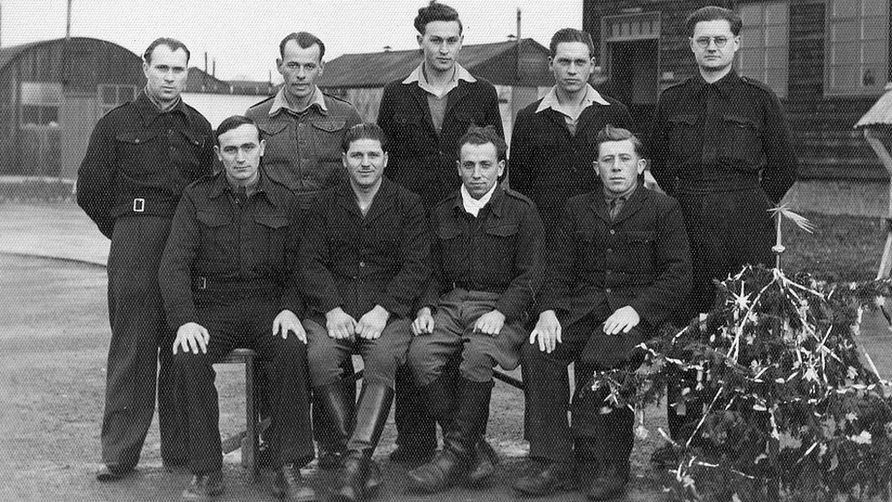Boat Race 2021: Famous duel returns to quiet backwater
- Published

Members of the Cambridge crew take to the River Great Ouse for training
The eyes of the world will soon be trained on a flat and windy corner of Cambridgeshire for the 166th Boat Race. Why has it ended up here rather than its usual home in London?
The Boat Race between Cambridge and Oxford has long been a staple of the annual sporting calendar.
But this year the landmarks of Putney, Mortlake and the mighty Thames will be replaced, for one year only, by the hamlet of Queen Adelaide, the village of Littleport and an almost bolt-straight stretch of the Great Ouse.
The Oxford and Cambridge crews will power along this man-made river that transects vast, carpet-flat, fenland buffered by 6ft (1.8m) banks on both sides.
However, anybody planning to pitch up on Padnal Bank for a prime view will be disappointed. The 2021 Boat Race will be a closed event whose polite, but firm, message from the organisers is "stay away".
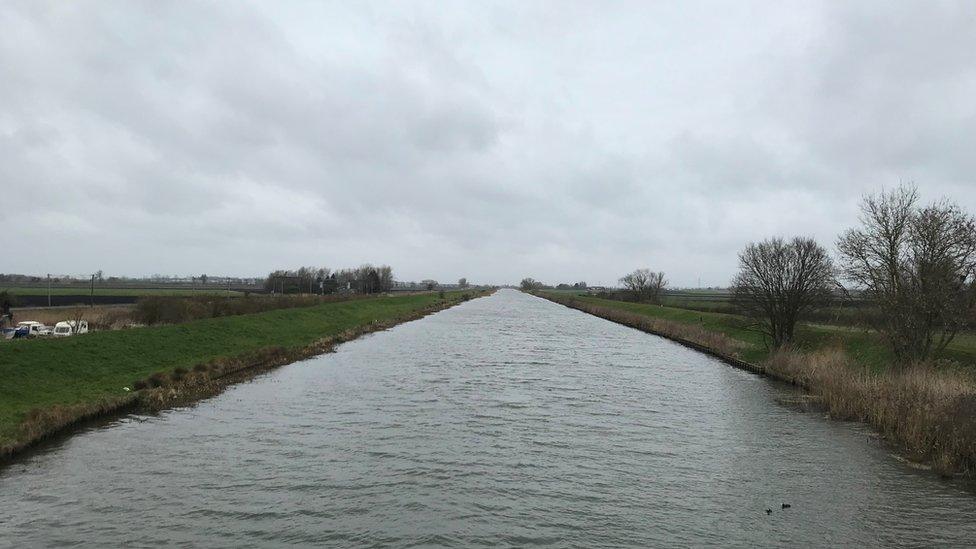
The man-made Adelaide Straight was completed in 1829 - the year the very first Boat Race took place in Henley
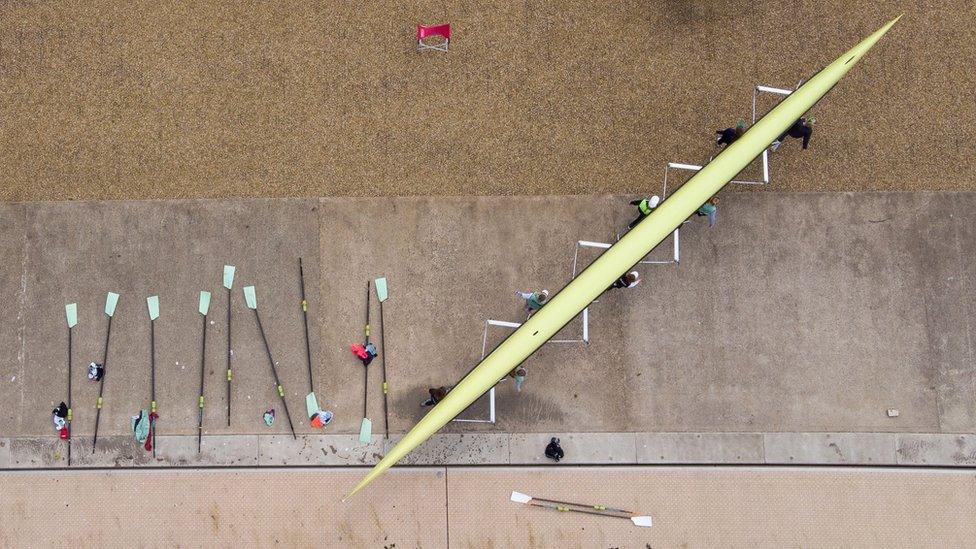
A combination of strict social distancing and repair work on Hammersmith Bridge forced event organisers to look elsewhere for 2021
The annual race normally attracts more than 250,000 people to the banks of the Thames, with a further seven million tuning in on television.
It was the first televised competition to be cancelled in 2020 when the initial lockdown took hold.
A combination of strict social distancing and repair work to Hammersmith Bridge forced event organisers to look elsewhere for 2021.
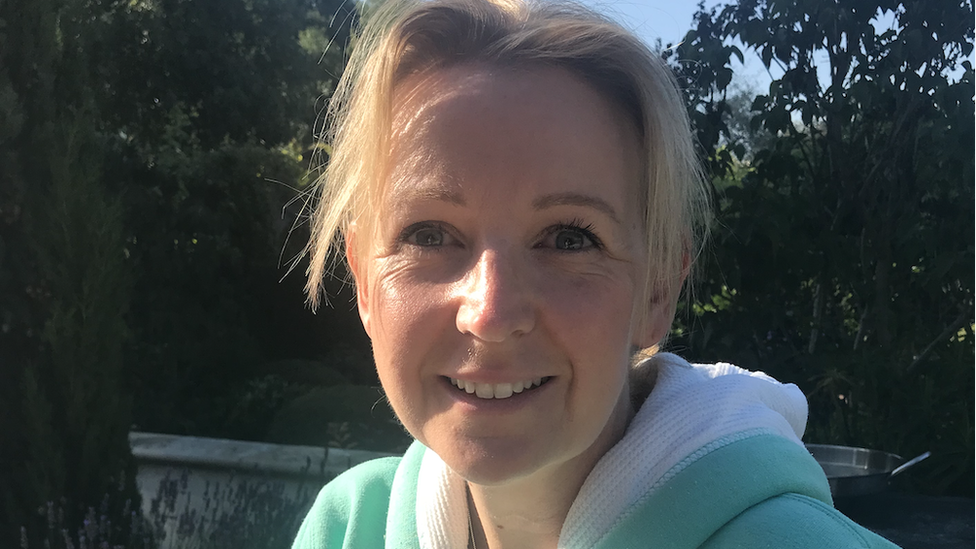
Siobhan Cassidy says a number of locations across England were considered for the 2021 race
"We had a long-list of 11 beautiful locations, from Devon to Newcastle, including lakes, but we came back to Ely," says Siobhan Cassidy, Cambridge director for the Boat Race Company.
"We didn't want to hold it in another major city but also not [in a location] so remote that it couldn't be followed by camera crews," she says.
You might also be interested in:
Usually 4.2 miles (6.8km) long, this year's course will be a little over 3 miles (4.89km) long. It will start at the Queen Adelaide Bridge and finish just shy of the Sandhill Bridge at Littleport.
Footpaths, the windswept banks and the start and finish bridges will be closed to spectators.
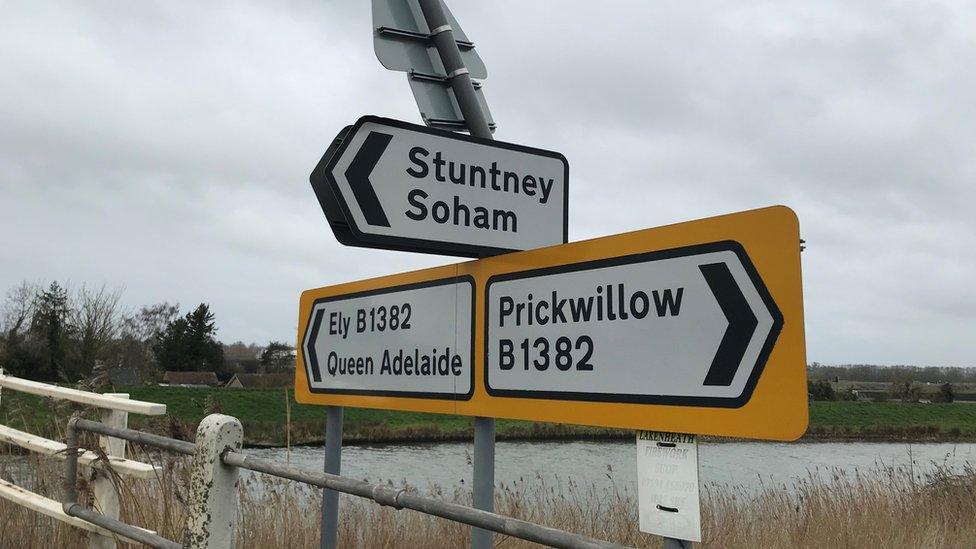
Queen Adelaide near Ely is named after the wife of King William IV, Queen Victoria's aunt
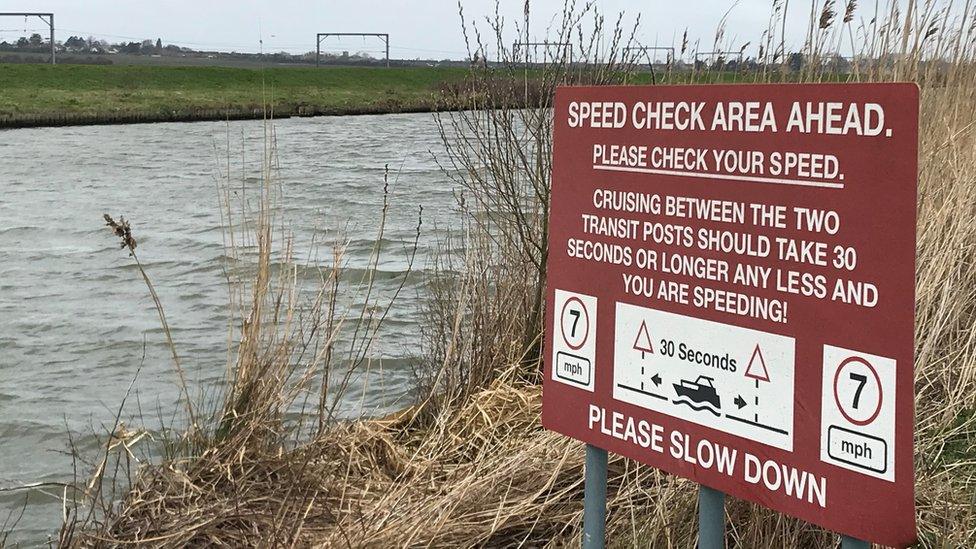
The Great Ouse is not tidal but can still get quite choppy in strong winds
East Cambridgeshire District Council is leading a safety advisory group for the event, comprising councils, the emergency services and public health, to ensure people can't gather on the banks.
"You couldn't ask for a better viewing gallery for a race like this, so it's incredibly frustrating that we have to close it all off," says council leader Anna Bailey.
"We're also conscious that it coincides with the return of the rule of six and outdoor meetings, and if the weather's good people will want to get out and about.
"Please stay local and stay at home."
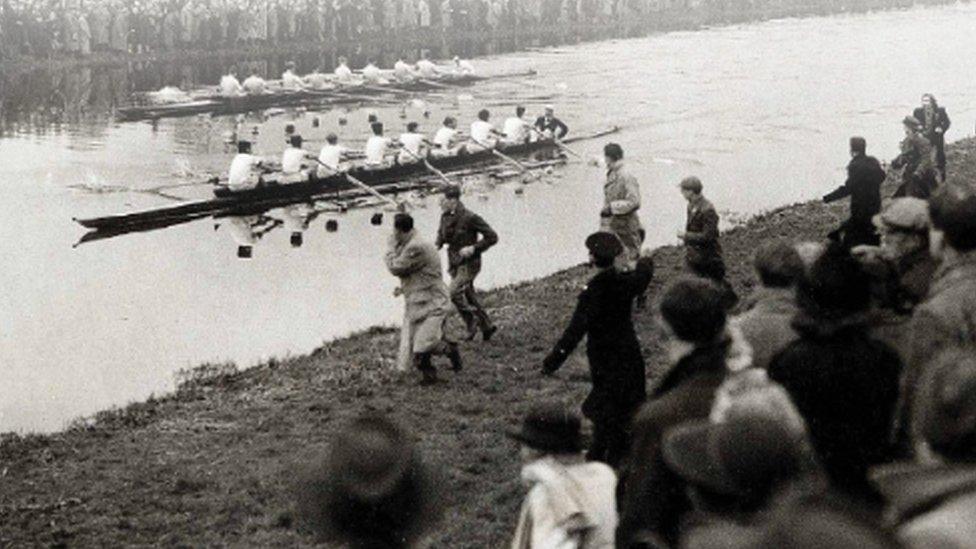
The Boat Race also took place in 1944 on the Great Ouse, when Oxford won
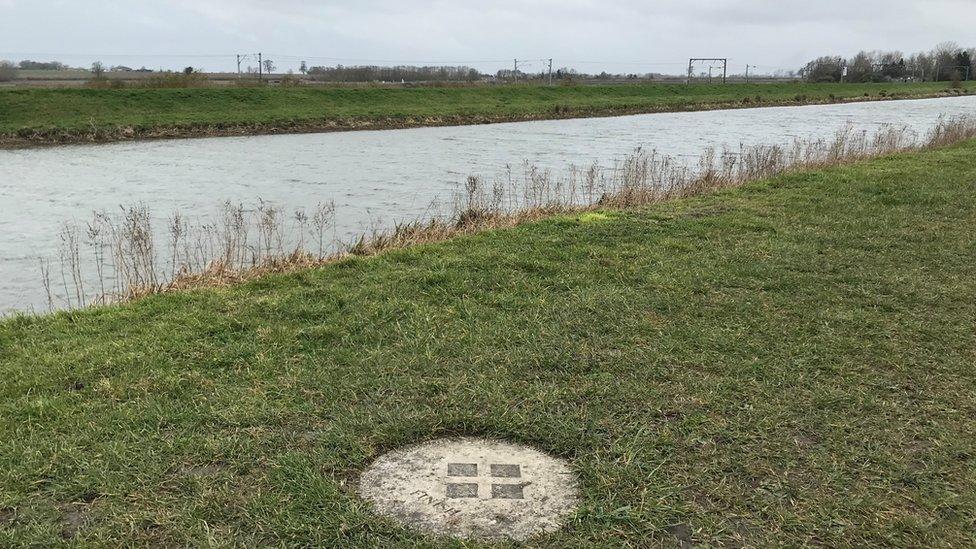
The 1944 finish line stone marker can be seen on the riverbank close to Queen Adelaide Bridge
This is not the first time the Fenland waterways have hosted the internationally-renowned Boat Race.
In 1944, the crews took to the Adelaide Straight, albeit unofficially and in the opposite direction, while World War Two raged across the globe.
Back then, crowds thronged the banks and ran alongside the race towards the finish flag at Queen Adelaide Bridge.
Its return to these waters also brings the race's history back to its beginnings.
Cambridge fellow Charles Merivale is co-credited with inspiring the annual race, external after challenging his Harrow School and Oxford pal Charles Wordsworth to an inter-varsity rowing competition in 1829. Merivale went on to become Dean of Ely.
The 1944 race was re-enacted 60 years later in 2004 by a group called the Diamond 44, with a wreath laid at Merivale's grave in Ely Cathedral.
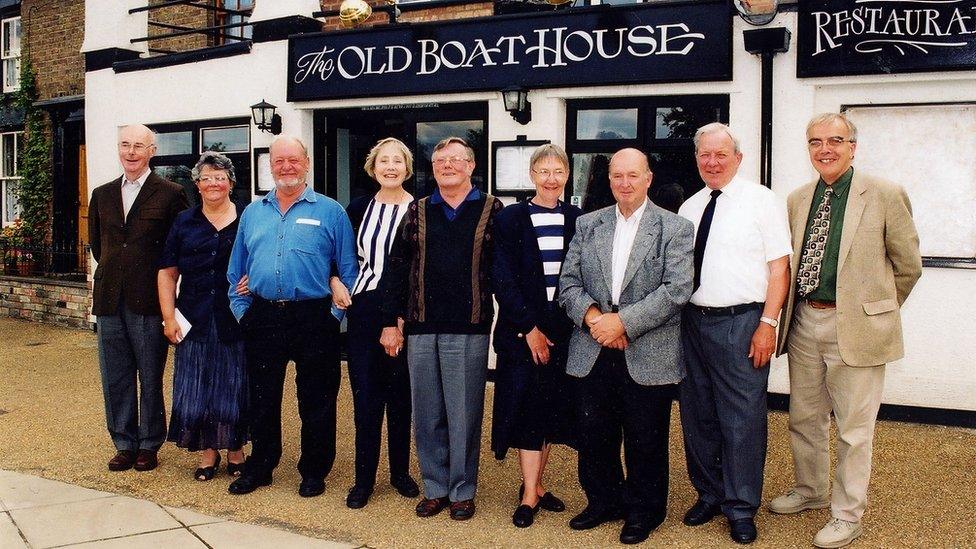
Members of Diamond 44, who all witnessed the 1944 Boat Race, pictured in 2002 as they began preparations for the 60th anniversary
"We see the Boat Race coming again as a bit of a gift," says Diamond 44's Jack Waterfall.
"It gives us a chance to raise the profile and maintain the legacy of community rowing here."
Littleport, where the 2021 race ends, was the scene of the eponymous riots of 1816, where impoverished locals took a stand against their wealthy neighbours in the destitution left by the Napoleonic wars.
The village also holds a memorial to William Harley, born locally, whose son co-founded the Harley Davidson Motor Company.
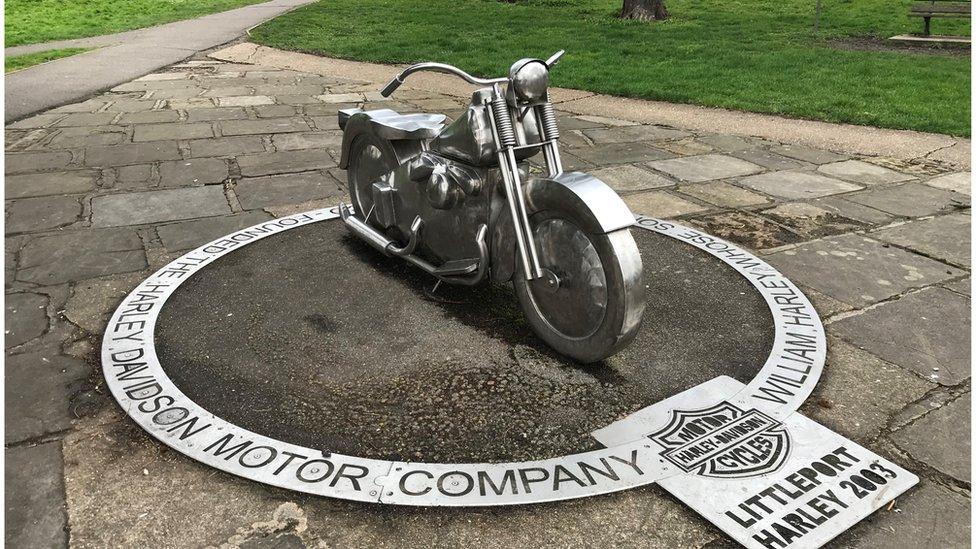
Littleport's Harley Davidson memorial. The village won't be able to capitalise on the Boat Race this year
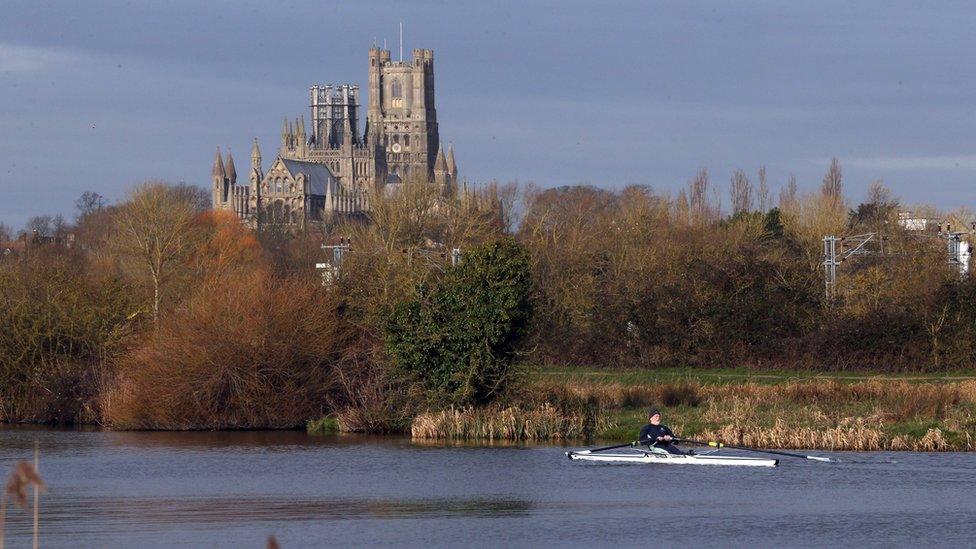
A view of Ely Cathedral, the Ship of the Fens, from the Great Ouse
Staging an international event like the Boat Race would normally bring its host significant revenue.
A 2017 report into the "impact of a single day major event on a city, external" by the Boat Race Company and engineering firm Arup, estimated the "total net economic benefit" to the local area around the race alone to be between £2.8m and £3.7m each year.
But this is income Ely and Littleport will not see on 4 April. Instead, community leaders hope the event will leave a residue of pride, good memories and inspiration in its wake.
"Ely Cathedral, the Ship of the Fens, provides an incredible backdrop this year, there's Wicken Fen nearby, the open countryside and wonderful wildlife really does make this place the jewel in the Fens," says Ms Bailey.
"We hope people watching will see this stunning landscape and lodge it in their minds for the future.
"When the race came here before, Churchill said it would raise national morale.
"We feel the same. The show must go on."
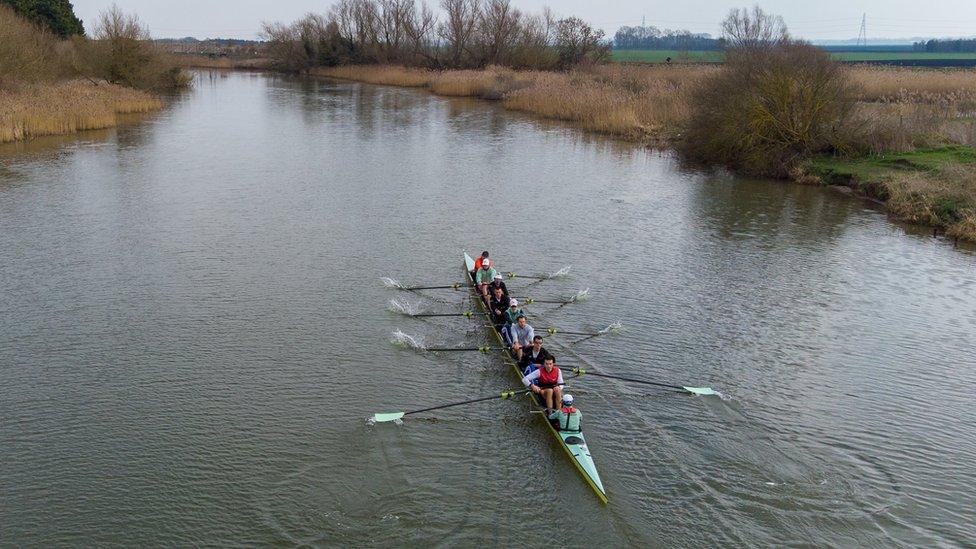
Members of the Cambridge University Boat Club train on the Great Ouse in the weeks before the race
The channel is also used by the 120-member Isle of Ely Rowing Club, borne of the 60th anniversary celebrations of the 1944 race in 2004.
Club chairman Richard Maxey says the river here is "not tidal - but it can get rough, and if the wind is coming down towards you it's hard to row against it".
"It's generally a benign place to row, it's relatively sheltered by high banks, but it's very beautiful," he adds.
Despite being a closed event, Mr Maxey hopes the Boat Race will raise the profile of smaller, inclusive rowing clubs like Isle of Ely, which works hard to undermine the elitist reputation of the sport.
"Our boathouse is a couple of shipping containers and a Portakabin, compared to Cambridge University's," he says.
"But the thought that these excellent athletes will be gathered here, our juniors will look up to them, and hopefully the skill and attitude to compete will rub off - even if they can't watch the race up close."
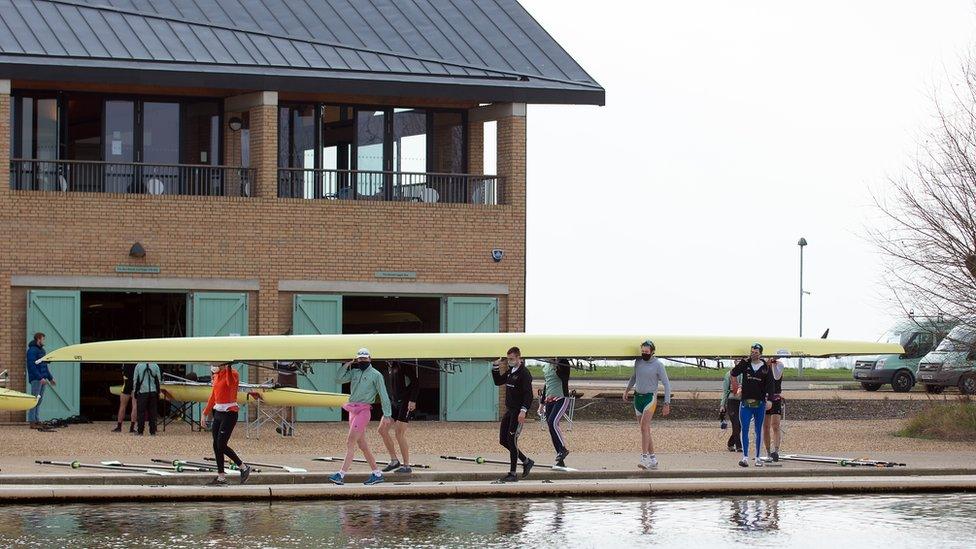
Cambridge University's boathouse stands by the Great Ouse on the edge of Ely
Ms Cassidy, who took to the stroke seat for Cambridge in the winning women's event in 1995, says this year's course will offer intense competition.
"It's not as wide here as the Thames, of course, but the teams have plenty of room to race side by side, and there are no narrow bridges, arches or bends to navigate," she says.
"It'll be more intense as the crews will feel closer together, like Henley."
The Cambridge rowers are familiar with the waters here because they have trained on the Great Ouse for decades to avoid congestion on the Cam.
The club's £5m purpose-built boathouse opened on the edge of Ely in 2016.
"There will be pressure on Cambridge to defend their title - and on home turf," Ms Cassidy says.
"It's a historic rivalry like no other. You don't have to have any attachment to the universities - just pick a colour and get behind them."
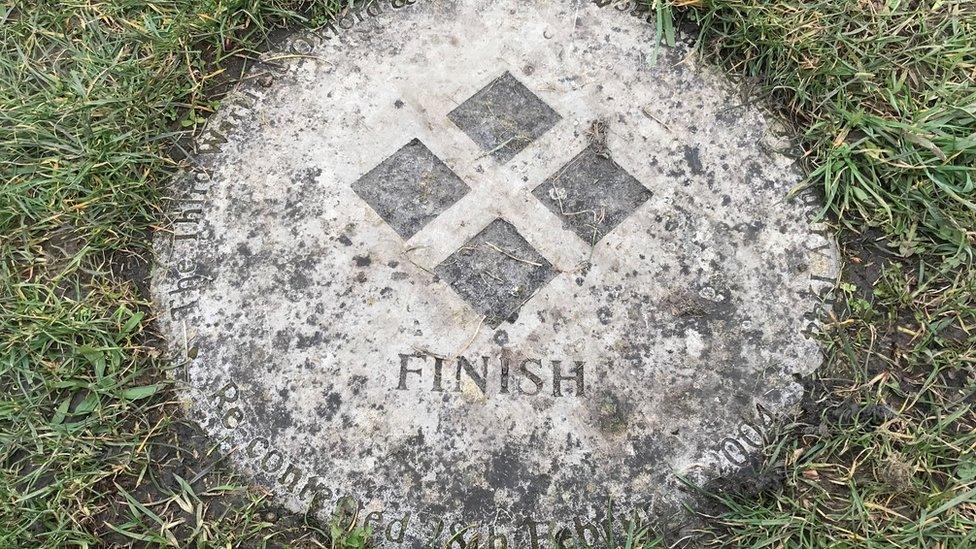
A humble stone on Padnal Bank marks the spot where the 1944 race ended - and where the 2021 race will start
The 2021 Boat Race will be shown live on BBC One on 4 April. Coverage from 15:00 BST.

Find BBC News: East of England on Facebook, external, Instagram, external and Twitter, external. If you have a story suggestion email eastofenglandnews@bbc.co.uk, external
- Attribution
- Published26 November 2020
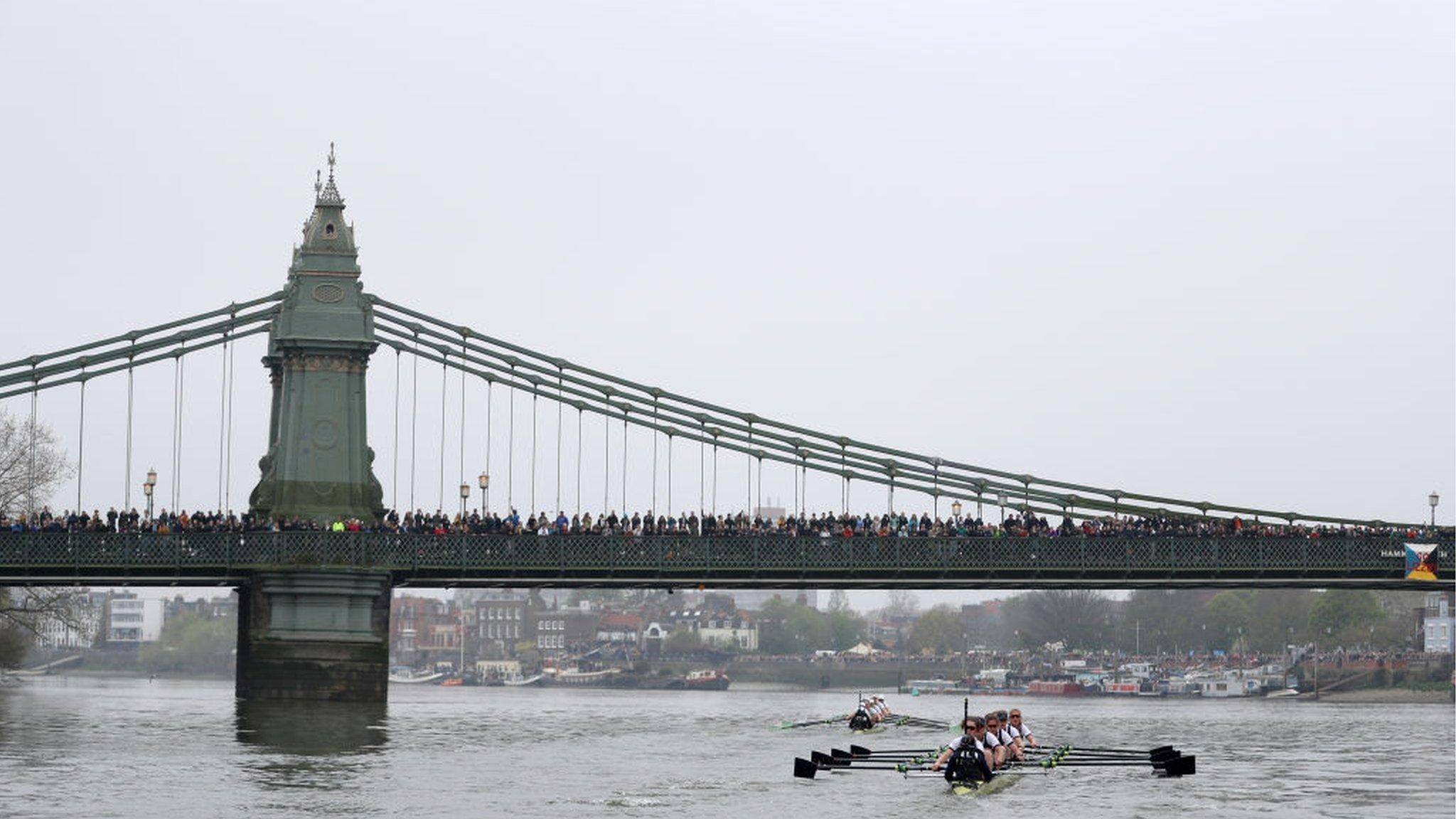
- Published28 May 2016
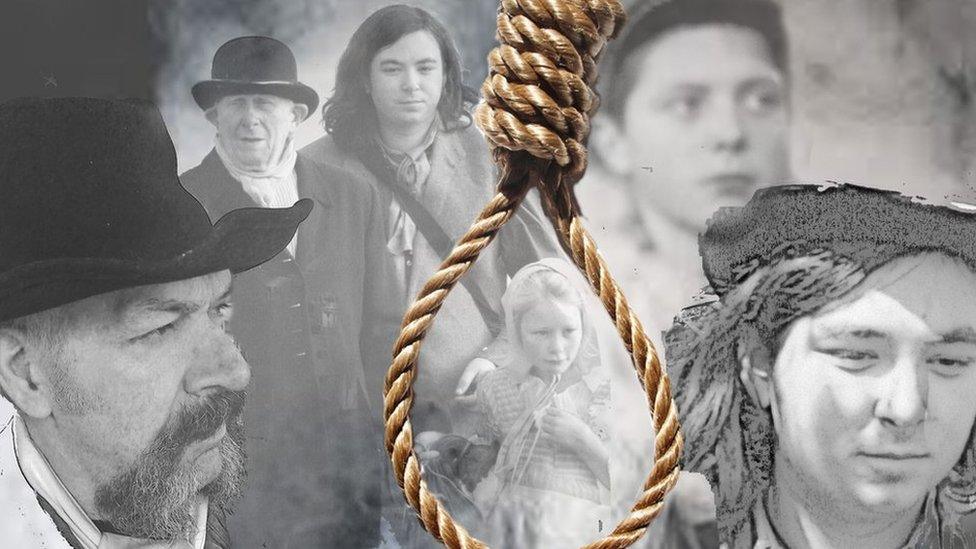
- Published25 December 2013
